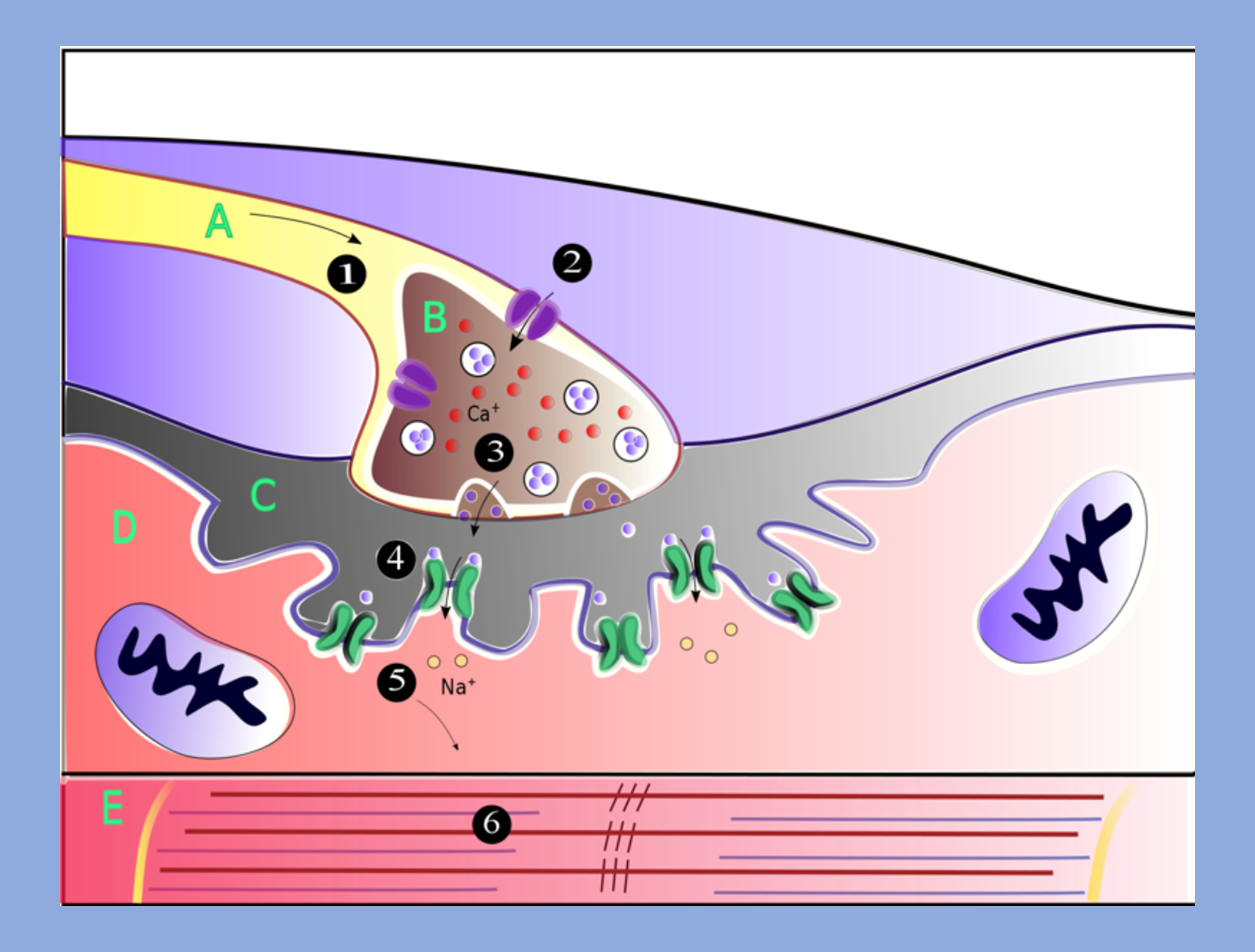Module 12: Muscle Physiology
Section outline
-

This module focuses on the physiology of how muscles work–starting with the initiation of the contraction, progressing to the contraction itself, and ending with the cessation of contraction or relaxation. Skeletal muscles can be used selectively in response to a demand, such as locomotion or moving a load. Factors like training and aging can change the appearance and performance of skeletal muscle. On the other hand, the cardiac muscle is always working and involves the coordination of different regions of the heart. Finally, smooth muscle often works behind the scenes at the tissue level to perform many essential functions, such as peristalsis. Understanding how all muscle types of work is necessary for many fields, including sports training, cardiopulmonary, gastrointestinal, and urogenital medicine.
("The Muscle Contraction Process" by Elliejellybelly13 is used with a CC BY-SA 4.0 license.)
Upon completion of this module, you will be able to:
- Describe the neuromuscular junction and relate it to excitation-coupling underlying contraction and relaxation of skeletal muscle. (CLO#s 1, 2, and 3)
- Explain how training and cessation of training affect skeletal muscle activity, including appearance, fatigue, and force. (CLO#s 1, 2, and 4)
- Define a motor unit and relate it to the concept of recruitment for enhancing skeletal muscle performance. (CLO#s 1, 2, and 4)
- Relate the structural organization of cardiac muscle to special aspects of cardiac muscle contraction, including coordination and self-activation. (CLO#s 1, 2, and 3)
- Describe the structure of smooth muscle and explain what factors cause contraction. (CLO #s 1, 2, and 3)
To achieve these objectives:
- Read the Module 12 Introduction. (CLO #2), (MLO #1, #4, and #5).
- Read Chapter 14 in the textbook. (CLO #1, #2, #3, and #4), (MLO #1, #2, #3, #4, and #5)
- Test Your Knowledge sections are located at the end of each segment in both chapters. Answering the questions in these sections will aid in your knowledge to help you with the course. These questions will be relevant for information on testing and quizzes. (CLO #1, #2, #3, and #4), (MLO #1, #2, #3, #4, and #5)
- Complete the exercises in the "Practice" sections at the end of each chapter. (CLO #1, #2, and #3), (MLO #1, #2, #3, #4, and #5)
- Complete the discussion activity. (CLO #1, #2, and #4), (MLO #2)
- Complete the case study exercise. (CLO #1, #2, and #4), (MLO #2)
- Complete the quiz. (CLO #1, #2, #3), (MLO #1, #2, #3, #4, and #5)
Module Pressbooks Resources and Activities
You will find the following resources and activities in this module at the Pressbooks website. Click on the links below to access or complete each item.
-
Read chapter, review the "Test Your Knowledge" questions, and complete the activities in the "Practice" section at the end of the chapter.
-
This quiz will have 5 questions. It is worth 10 points. You are allowed two attempts at this quiz. Correct answers will be available for review after the quiz is closed.
Directions for Instructors: Load questions from the Module 12 Question Bank.Set close date and then tick "Right answer" box under "After the quiz is closed" section of Review Options.
- Describe the neuromuscular junction and relate it to excitation-coupling underlying contraction and relaxation of skeletal muscle. (CLO#s 1, 2, and 3)
Background Colour
Font Face
Font Kerning
Font Size
Image Visibility
Letter Spacing
Line Height
Link Highlight
Text Colour
